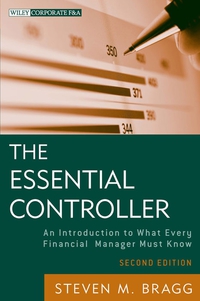

Capital Income Taxes An economy has the production function Y = KLl-a It is populated by two types of households: workers and capitalists. Workers supply a total of L units of labor inelastically and consume all their income in every period, so they don't really make any decisions. Their consumption in any given period is given by Ct = wtL+T where wt is the wage and Tt is a transfer they get from the government. Capitalists have preferences given by 00 'utc.) t=0 They do not work: they get their income from capital, and it is taxed at a rate T. However, they can choose how much to consume and how much to save in the standard way. Their budget constraint is C++ Kt+1+Be+1 = (1+(1 T)[FK2 - ])K+ +(1+ (1 - 1)rt)B+ where Kt is the capital stock in period t, 8 is the rate of depreciation, t is the tax rate and Fk, is the marginal product of capital (which each capitalist household takes as given but depends on the total capital stock). What does this budget constraint mean? For each unit of capital the capitalist has, it obtains a rental equal to the marginal product of capital. The government taxes this rental (net of depreciation) at a rate T. Assume that the government taxes interest income in the same way as it taxes income from renting capital. (a) Set up the maximization problem of a capitalist household. (b) From the first order conditions, find an after-tax version of the Euler equation. (c) If in the long run this economy reaches a steady state in which consumption of the capitalists is constant, what is the interest rate in this steady state? (d) If the economy is in a steady state, what is the rental rate of capital? How does it depend on t? (e) If the economy is in a steady state, what is the capital stock? (f) How much revenue does the government collect from the capital-income tax in steady state? (g) What is the level of wages in steady state? (h) Suppose that the government uses all the revenue from the capital income tax to finance transfers to the workers. What level of consumption do workers attain in steady state? How does it depend on T? In this economy, are taxes on capital income a good way to redistribute from capitalists to workers in the long run? Capital Income Taxes An economy has the production function Y = KLl-a It is populated by two types of households: workers and capitalists. Workers supply a total of L units of labor inelastically and consume all their income in every period, so they don't really make any decisions. Their consumption in any given period is given by Ct = wtL+T where wt is the wage and Tt is a transfer they get from the government. Capitalists have preferences given by 00 'utc.) t=0 They do not work: they get their income from capital, and it is taxed at a rate T. However, they can choose how much to consume and how much to save in the standard way. Their budget constraint is C++ Kt+1+Be+1 = (1+(1 T)[FK2 - ])K+ +(1+ (1 - 1)rt)B+ where Kt is the capital stock in period t, 8 is the rate of depreciation, t is the tax rate and Fk, is the marginal product of capital (which each capitalist household takes as given but depends on the total capital stock). What does this budget constraint mean? For each unit of capital the capitalist has, it obtains a rental equal to the marginal product of capital. The government taxes this rental (net of depreciation) at a rate T. Assume that the government taxes interest income in the same way as it taxes income from renting capital. (a) Set up the maximization problem of a capitalist household. (b) From the first order conditions, find an after-tax version of the Euler equation. (c) If in the long run this economy reaches a steady state in which consumption of the capitalists is constant, what is the interest rate in this steady state? (d) If the economy is in a steady state, what is the rental rate of capital? How does it depend on t? (e) If the economy is in a steady state, what is the capital stock? (f) How much revenue does the government collect from the capital-income tax in steady state? (g) What is the level of wages in steady state? (h) Suppose that the government uses all the revenue from the capital income tax to finance transfers to the workers. What level of consumption do workers attain in steady state? How does it depend on T? In this economy, are taxes on capital income a good way to redistribute from capitalists to workers in the long run








